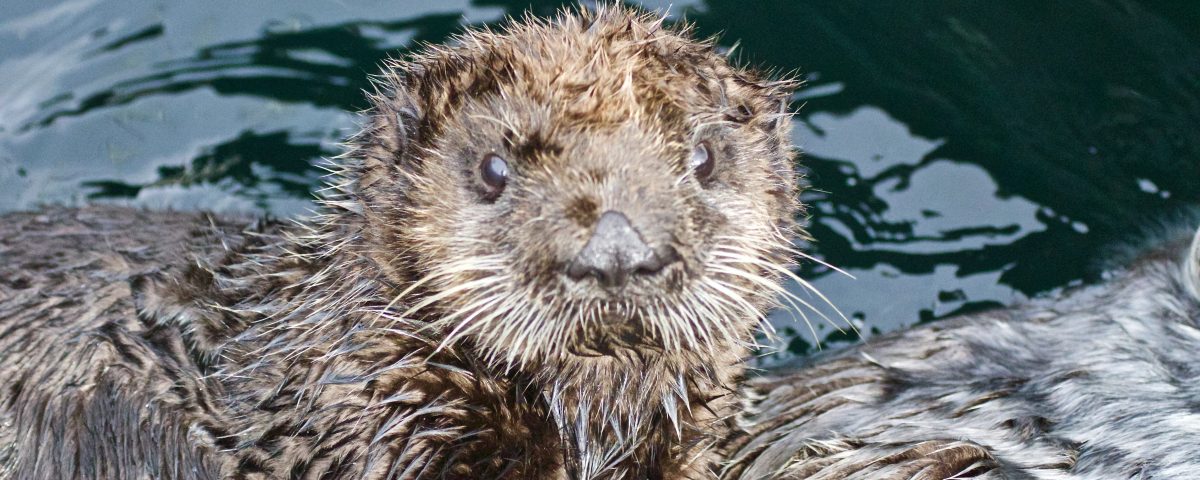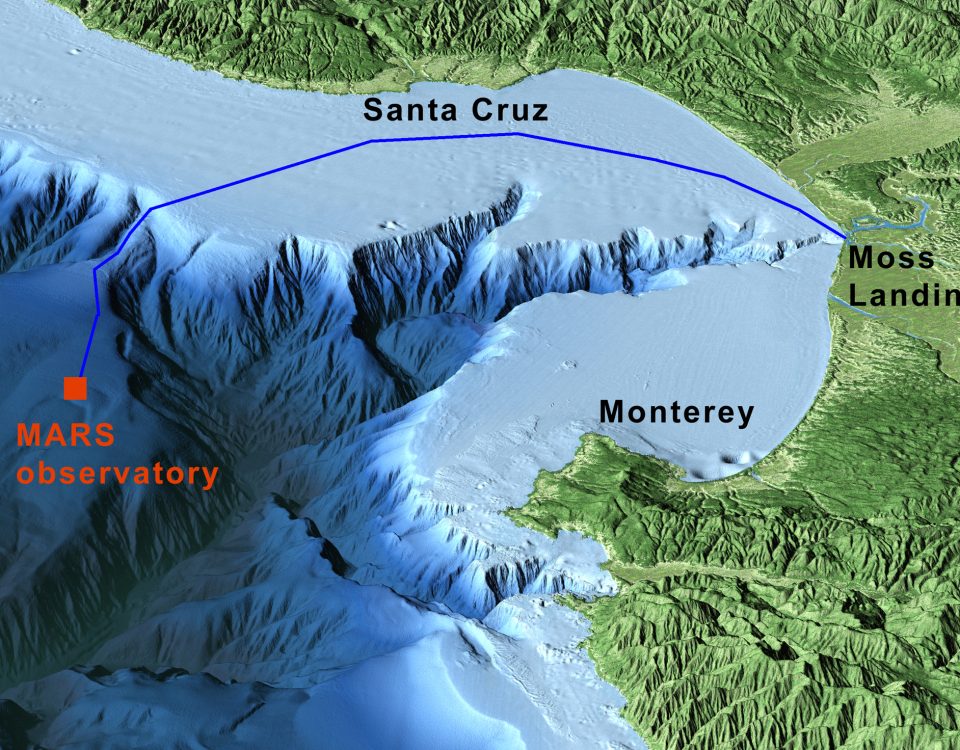
Killer Whales on Monterey Bay
November 26, 2018
Gray Whale Northbound Migration Through Monterey Bay
December 29, 2018By: Evan Firl, Marine Biologist
 This is the Monterey Bay story. It’s an area teeming with life from seabirds and whales all the way down to the kelp, algae, and plankton. However, present day areas of natural beauty like Monterey Bay and others around the globe are given titles of cleanliness like “pristine”, “flawless”, and “unsullied” hearkening back to a time before humans heavily impacted natural ecosystems. While many of these terms seem to brand humans as beings that muck-up or soil environments, there are numerous accounts of environmental heroism. This refers to areas that exhibit magnificent recovery at the hands of human intervention after years of overuse, misuse, or plain negligence. In 1992, one such act occurred, the Monterey Bay National Marine Sanctuary was established thereby protecting much of the marine life located within its borders on the California Coast. A massive expanse of the coastline exists within the protection of the MBNMS (Monterey Bay National Marine Sanctuary). 4,600 square miles of ocean resides within the MBNMS with depths ranging from just a few feet to almost 3 miles and stretches from sandy beaches to an average of 30 miles offshore.
This is the Monterey Bay story. It’s an area teeming with life from seabirds and whales all the way down to the kelp, algae, and plankton. However, present day areas of natural beauty like Monterey Bay and others around the globe are given titles of cleanliness like “pristine”, “flawless”, and “unsullied” hearkening back to a time before humans heavily impacted natural ecosystems. While many of these terms seem to brand humans as beings that muck-up or soil environments, there are numerous accounts of environmental heroism. This refers to areas that exhibit magnificent recovery at the hands of human intervention after years of overuse, misuse, or plain negligence. In 1992, one such act occurred, the Monterey Bay National Marine Sanctuary was established thereby protecting much of the marine life located within its borders on the California Coast. A massive expanse of the coastline exists within the protection of the MBNMS (Monterey Bay National Marine Sanctuary). 4,600 square miles of ocean resides within the MBNMS with depths ranging from just a few feet to almost 3 miles and stretches from sandy beaches to an average of 30 miles offshore.

Monterey Bay Kelp
Existing within this section of ocean live some of the world’s most mysterious species as well as some of the largest animals ever to exist on the earth. A whopping 500 fish species are just the tip of the diversity iceberg here with 450 marine algae species, 180 types of seabirds, 31 phyla of invertebrates, and even 4 different types of sea turtles. And these are just the species that are known! It remains to be seen how many creatures lie patiently in the depths and crevices of the massive and mysterious Monterey Canyon waiting to be discovered.
Obviously, the creation of the marine sanctuary alongside numerous other nature preserving initiatives, like the establishment of marine protected areas and more stringent regulations on human impact, such as overfishing or pollution, allowed for this semi-fragile ecological wonderland to flourish in recent decades leading to unprecedented marine health that reflects a time before human influence. The effects of this protection and monitoring are particularly evident during certain months within Monterey Bay. During summer, a natural process called upwelling occurs drawing massive nutrient stores from the depths of the ocean to the surface creating an overflow of food for small critters like the characteristic anchovies and sardines of the bay. This, in turn, is capitalized on by an innumerable amount of species from the very small all the way to the behemoths of the sea, the great whales.

Breaching Humpback Whale
Recent years have shown unprecedented numbers of whales in the bay, mainly the fan favorite, the acrobatic and talkative humpback whale. These massive creatures, reaching up to 60 feet in length, come into the bay right near an area known as Moss Landing to engorge themselves on the unbelievably large schools of sardines and anchovies in the summer months between August and October. Naturally, whale watchers come out in droves during this time to witness events of such grace that it goes virtually unparalleled in the marine world. A profound example of this is the breaching of the humpbacks, which is the stunning movement of the humpback as it propels up to 80% of its body out of the water only to come slamming back down in a show of elegance and majesty to human and fish alike. Yet these acrobats of the sea don’t end there. Copious amounts of lunge feeding occur in the bay as well during their stay. This is where humpback whales visibly feed at the surface in cooperation with one another to corral fish like a herder of sheep only to engulf thousands of anchovies and sardines in one fell swoop. Yet, without the protection of the marine sanctuary and MPAs (Marine Protected Areas) this strip of sea might not have the incredible number and quantity of marine species to capitalize on this food source that we presently see.

Seal – Photographer Dr. Elliott Hazen NMFS/SWFSC/ERD
It is true that the diversity within the Monterey Bay existed prior to the establishment of the MBNMS; however, the sanctuaries establishment has aided in the flourishing and persistence of these species that we hold near and dear to us in the bay. Without the careful monitoring and protection of life that we currently have in Monterey Bay, we may not have had the opportunities that we do today. To clarify, these opportunities take many different forms. This can range from the overall health of the bay, to scuba diving, or even the livelihood of local fishermen and tour boats like the whale watching vessels in Monterey and Moss Landing alike.

Lunge Feeding Whale – Photographer Dr. Elliott Hazen NMFS/SWFSC/ERD
The life and health of the bay are reflected and in part sustained by those who live and breathe near and on the sea here in Monterey. A great example is the whale watching tours led by Sea Goddess Whale Watching. We embody the idea and concept of the marine sanctuary and the protected area that exists and is the Monterey Bay aiming to educate people on the human effort that has been taken to preserve and restore the bay. Leading tours out into the bay daily, we go a step further than simply showing you a whale or two. We create a dialogue between man and beast, allowing an inside glimpse into a multitude of creatures within Monterey Bay. Sea Goddess crew will not simply sit you next to these majestic animals, we will ensure that you understand their complexity, their physiology, their sentience, and how critical these animals are to their environment. Our onboard marine biologist will paint you a vivid picture regarding how vital it is to keep Monterey Bay and oceans around the globe a place of majesty and marvel for generations to come so others may share in the experience that we have the privilege to enjoy out on the ocean today.
Without the MBNMS, Marine Protected Areas, and other protective initiatives we would still have a bay containing a multitude of fish and even whales, but it would not be the same. The light of the bay would be dimmed, the diversity would be lower, and the unsullied waters we take for granted here in the bay today would be but a shadow of a dream. What we have here is no doubt one of the great and miraculous marine wonders of the world. Through the aforementioned marine protection initiatives, Monterey Bay has been given the chance to blossom into an enigmatic, mysterious, and yes, even pristine marine environment whose like is seldom seen in our current time. It truly is one of a handful of marine systems that remains a utopia for marine creatures big and small and is a must-see for anyone interested in the wonders of the marine world. From scuba divers to whale watchers, you shan’t be disappointed.




